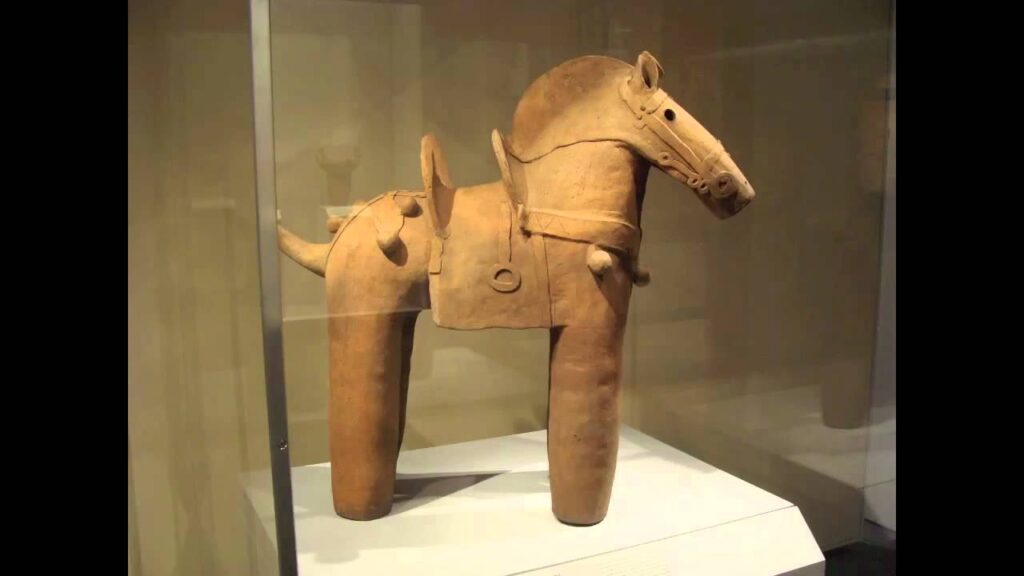Enchanted riders, ghostly horses, and tortured souls round out this Halloween edition of the Ancient Art Podcast. The Art Institute of Chicago's new Weston Wing of Japanese Art showcases wonderful works from Japanese prehistory through present day. We wrap our head around the 5th and 6th century earthenware haniwa tomb figures of Japan's Kofun era, including a particularly magnificent clay horse. An interesting passage from an ancient text reveals there's more than meets the eye to these figurines. We see what's at stake in some ghoulish Japanese ghost stories. And the haunting Edo period woodblock prints of the series "One Hundred Ghost Stories" (Hyaku Monogatari) by the master printmaker Katsushika Hokusai (1760-1849) contributes to the creepiness. Lastly, we put the nail in the coffin with a nod to modern horror cinema. Light some candles and snuggle up for our most horrific episode yet! Explore more episodes, image galleries, credits, transcripts, and additional resources at . Connect at and .


About the Haniwa horse head, What was the artists intentions and what do u think was the movement of the artist?
Very impressed with your work. Next time i visit Chicago, i know where i will be going.
@urimizawe26 Do you think the artist was inspired by the legend of the mysterious rider in the Nihon Shoki? What do you think?
@SCARABsolutions Of course! thank you very much
cool stuff, thanks
They’re hand and finger puppets…
Hand and finger puppets, indeed! Would be plausible if they weren’t over a foot high and made of heavy clay! But I applaud your creative thinking. Thanks for watching.
i came here from animal crossing because i was intrested in gyroids 🙂
Poor lloid
Animal crossing??
how can the the horse have a saddle and a bit ? the kofun period was from 250 to 538, which means they would already had invented this at that time ?!
So it would seem … invented or adopted. Contemporary horse sculptures from China sometimes depict saddles and other tack. The history of saddles is not my thing, but apparently they had apparently already been in use in Asia for centuries by this point. Great observation, though! Keep up that critical thinking!
Haniwa has a mix of Chinese, Mongolian and Korean culture. culture similar to Southeast Asia is also included. Sixth century. You can see the ancient Japanese in the Envoys of each country that went to China Ancient painting in the 6th century. (唐閻立本王會圖) They go black skin, barefoot, cloak, coat. they are the as some Haniwa. The hierarchy of Haniwa is costumes and armor & hair style of Mongolia, Korea, China.
I love haniwa. The way they look, the idea behind it. Its so fascinating to me